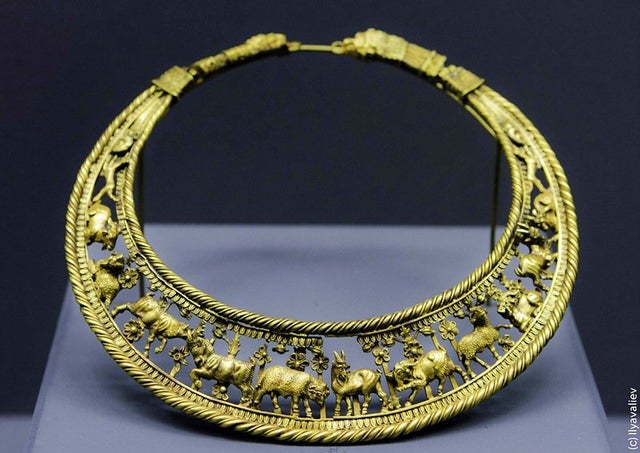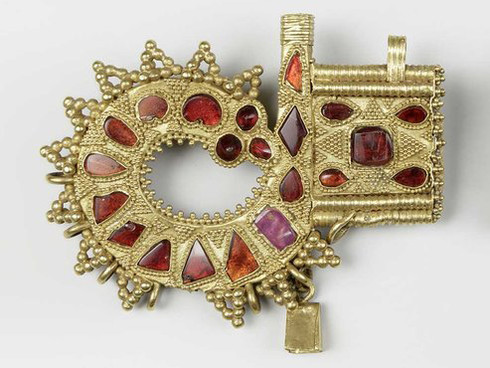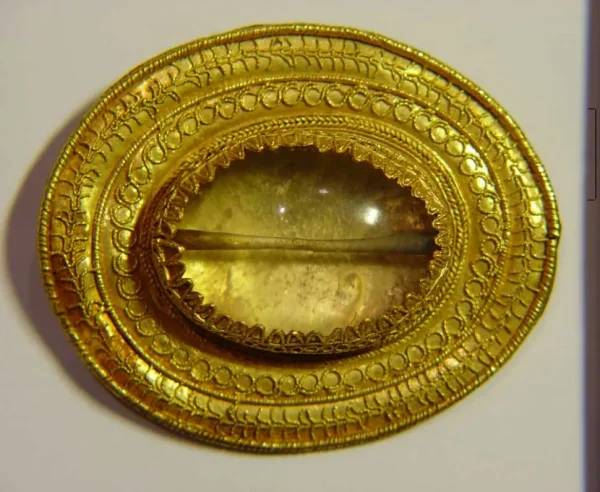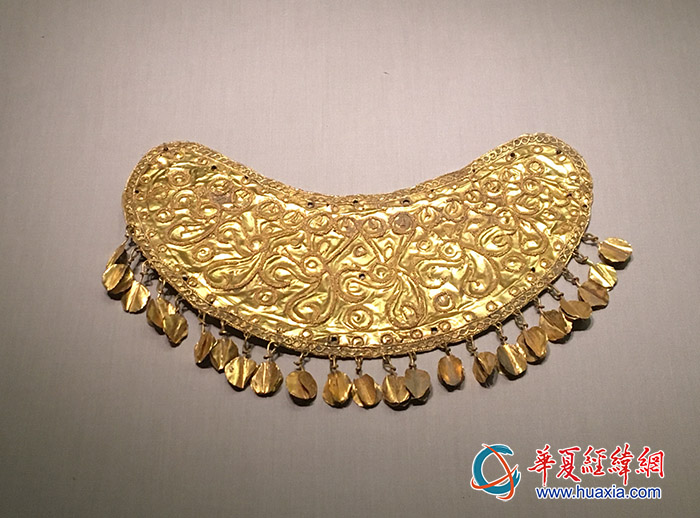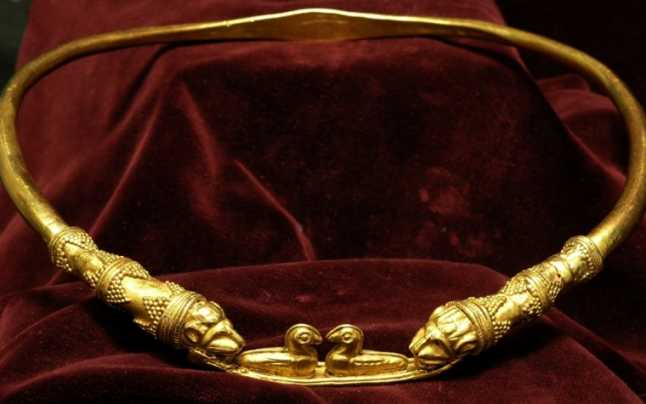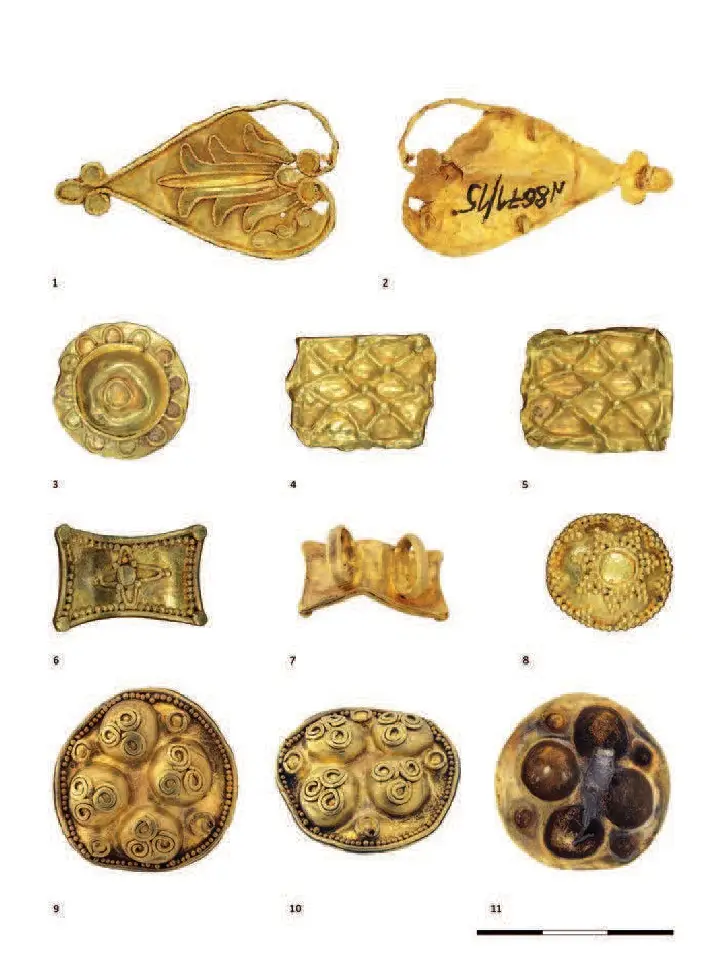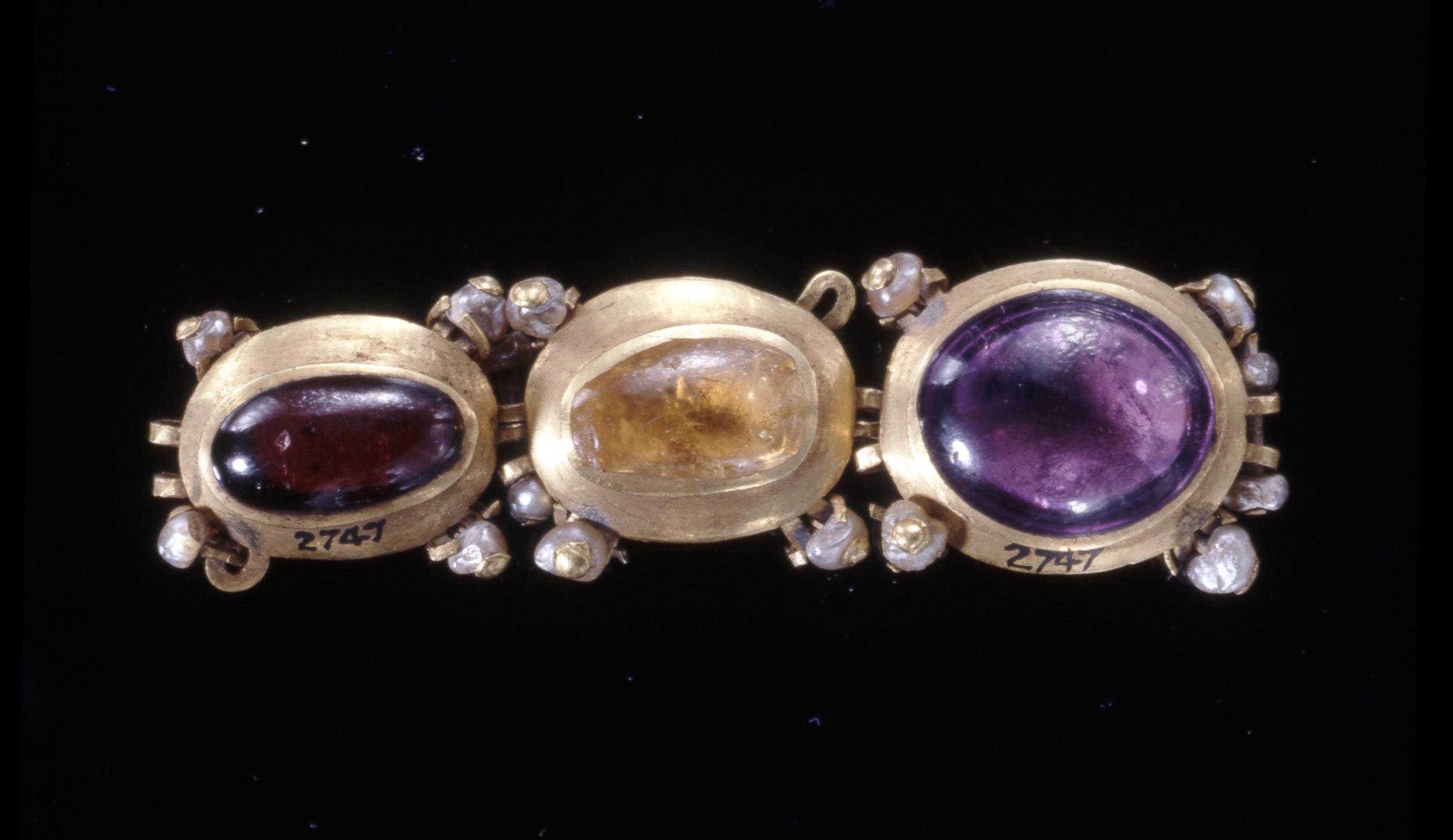“Maikop is the name given to the culture that extended throughout the Northern Caucasus, from the Caspian to the Black Sea, after the location of a barrow. Discovered in 1897, the barrow was one of the richest in Europe and dated from the end of the 4th to the beginning of the 3rd millennium BC. The contacts between the bearers of the Maikop culture and the nomadic tribes of the Eastern European steppes, where Balkan imports are known, made possible the comparison of the two most investigated chronological systems, the Near Eastern and the Balkan. Based on that comparison, it has been possible to synchronize the principal archaeological cultures of south Eurasia from the 4th to the 3rd millennium BC with the antiquities of the Near East and of the Balkan Peninsula.
The so-called Maikop treasure includes around 300 objects ranging in date from the Bronze Age throughout the Medieval Period. The objects are currently held in four institutions: the Antikenabteilung Staatliche Museen and Museum furor- und Fruhgeschichte in Berlin, the University of Pennsylvania Museum of Archaeology and Anthropology in Philadelphia and the Metropolitan Museum of Art in New York. The Penn Museum holds the largest number of items with the greatest chronological range, from the 3rd millennium BC to the 14th cent. AD” [Eleni Konstantinidi-Syvridi]
The “Maikop” treasure in the Penn Museum >> https://www.penn.museum
Gold diadem, 499-400 BCE
Scythian, Maikop, Kuban
3 gold-leaf floral plaques on band, length 25 cm obj. no. 30-33-6
4 gold-leaf floral plaques; twisted wire cloisonné which formerly held enamel obj. no. 30-33-5
[compare with Cyprus and Israel]


From small box; of gold leaf ornamented in repousse: Strip (in 3 pieces) with 6 floral pendants. L: 10 cm
Dated 399-200 BCE


Woven gold chain dividing into 3 chains each ending in a floral tassel top. L 24.7 cm, W 1.2 cm
499-400 BCE

“Maikop Treasure” Given to Museum
an article in the The Science News-Letter, June 1930
DOI: 10.2307/3905776

The “Maikop” treasure in in the Antikensammlung Berlin

The gold pectoral is inlaid with blue and green glass paste. It could have been sewn below the neck of a garment as a breast plate / pectoral. “Such ornaments are known in Assyrian, Urartean, and Iranian art of the 1st millennium B.C.”
Length 23 cm. Acc. no. 30221e.
[Oliver Harper]
Chains with flower-shaped bells: lengths 26 cm
Chains with rams’ heads: lengths 15.7 cm
Acc. no. 30221 [O.H.]
- The Maikop Treasure, Review by Eleni Konstantinidi-Syvridi, National Archaeological Museum, Athens https://www.academia.edu
- “The Maikop Treasure” Oliver Harper
The Metropolitan Museum of Art Bulletin
New Series, Vol. 32, No. 5, From the Lands of the Scythians: Ancient Treasures from the Museums of the U.S.S.R. 3000 B.C.-100 B.C. (1973 – 1974), pp. 156-160 (5 pages) Published By: The Metropolitan Museum of Art https://www.jstor.org/stable/3269238 - The Maikop Treasure, Aleksandr Leskov https://edspace.american.edu









